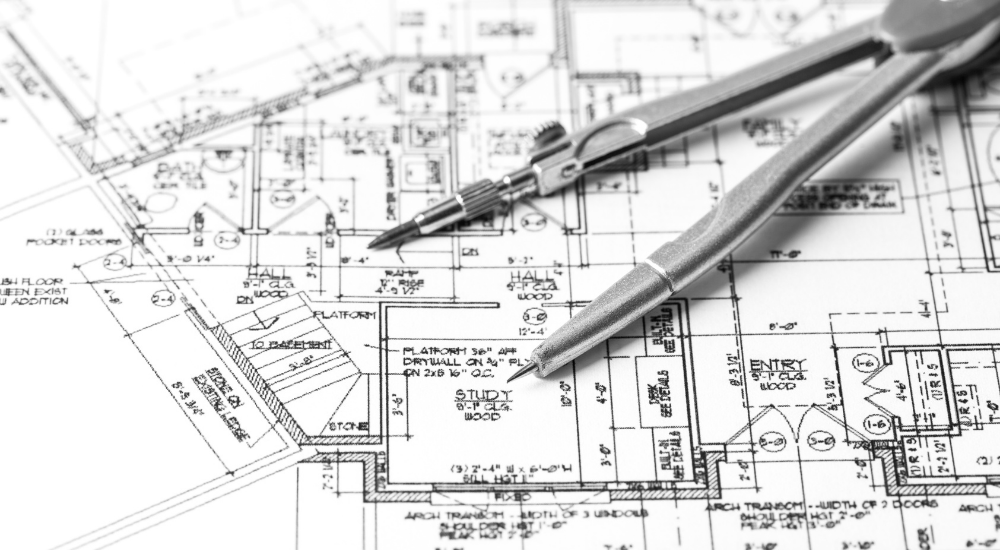Architect Portfolio Showcases That Win Over Clients Immediately
Architect Portfolio Showcases That Win Over Clients Immediately
Blog Article
Recognizing the Diverse Job Paths Available for Aspiring Architect
As a hopeful Architect, you have a world of occupation paths waiting for you. Whether you're attracted to conventional style or the subtleties of sustainable layout, there's a particular niche that aligns with your passions.
Traditional Design: Creating Frameworks and structures
Standard architecture concentrates on designing buildings and frameworks that mix functionality with visual appeal. As you discover this field, you'll value the intricate balance between kind and function. You'll find out to draw motivation from historical styles, incorporating aspects like symmetry, materials, and craftsmanship. Your styles can show cultural heritage, showcasing regional practices while fulfilling contemporary requirements.
You'll establish abilities in drafting, model-making, and website evaluation, enabling you to envision and interact your concepts properly. Engaging with clients, you'll need to understand their vision and equate it into viable designs.
In addition, constructing codes and sustainability methods are vital in your job, ensuring your structures are eco pleasant and safe. As you expand in your occupation, you'll locate opportunities in property, commercial, or perhaps restoration projects, each offering special difficulties. Welcoming conventional design leads the way for a meeting profession that admires the past while forming the future.
Urban Preparation: Forming Neighborhoods and Public Spaces
As a hopeful Architect, you can play a vital duty as a metropolitan organizer, changing just how areas function and interact. By using community involvement techniques, you'll assure that residents have a voice in shaping their atmosphere. And also, incorporating lasting design concepts will certainly help develop spaces that not only satisfy today's demands yet likewise safeguard the future.
Role of Urban Planners
While several may think of designers as the sole dreamers behind structures, urban planners play an important function in forming the broader landscape of areas and public areas. By teaming up with different stakeholders, you'll help create parks, transportation systems, and residential locations that advertise social interaction and accessibility. Your expertise in spatial style and area characteristics permits you to picture future growth while protecting cultural heritage.
Area Engagement Techniques
Efficient community involvement approaches are crucial for city coordinators to guarantee that the voices of locals are heard and valued in the planning process. To cultivate significant discussion, you should focus on open forums and workshops where area participants can share their ideas and worries. Usage surveys and social media sites to get to a broader target market, guaranteeing varied perspectives are included. Teaming up with local organizations can improve depend on and promote much deeper links. It's vital to give clear info about decision-making procedures and suggested projects, allowing locals to really feel enlightened and encouraged. By actively paying attention and incorporating responses, you'll produce rooms that reflect the neighborhood's needs, inevitably bring about even more sustainable and successful city atmospheres. Welcome transparency and continuous discussion for lasting impact.
Sustainable Design Principles
When creating city areas, incorporating sustainable layout principles is essential for developing environments that grow both ecologically and socially. Think about incorporating environment-friendly areas, like parks and gardens, to enhance biodiversity and enhance air high quality.
Creating with water preservation in mind is likewise crucial-- think concerning rainfall yards and permeable surfaces to manage stormwater. Entailing neighborhood participants during the planning process warranties that the rooms you develop meet their requirements and urge social communication. By accepting these principles, you'll add to vibrant, lasting city landscapes that benefit every person.

Landscape Architecture: Developing Sustainable Outside Atmospheres
As you explore landscape architecture, you'll find vital layout concepts that create stunning and useful exterior rooms. Sustainable techniques play a crucial role in making certain these atmospheres flourish while reducing ecological impact. And also, you'll find a selection of job opportunities that enable you to make a real difference in exactly how individuals communicate with nature.
Style Concepts in Landscape
Comprehending layout principles in landscape architecture is crucial for producing sustainable outside settings that balance with nature. You'll require to contemplate aspects like percentage, range, and equilibrium to assure your designs really feel cohesive and inviting. Incorporating native plants not only enhances biodiversity but additionally lowers water use, making your landscape durable. Consider the flow of space and exactly how people interact with it; paths and seating locations should welcome expedition and leisure. Additionally, take note of seasonal modifications, making with products that match the environments year-round (Architect). By prioritizing sustainability and aesthetics, you can develop exterior areas that improve the neighborhood and advertise health. Welcoming these concepts will set a solid foundation for your career in landscape style.
Sustainable Practices Summary
Sustainable techniques in landscape design not only focus on visual appeals but likewise focus on eco-friendly health and Source wellness and resource preservation. You can make rooms that advertise soil health and wellness, such as utilizing natural materials and practicing permaculture principles. Eventually, these techniques ensure your styles benefit both individuals and the setting for years to come.
Job Opportunities Expedition
With a strong structure in sustainable practices, landscape design offers a selection of job paths that allow you to make a significant influence on the environment. You could work as a landscape designer, developing cosmetically pleasing and practical outdoor rooms, or specialize in environmental restoration, aiding to restore damaged communities. Urban coordinators often work together with landscape designers to produce green rooms in city settings, improving city livability. If you're enthusiastic concerning education and learning, take into consideration coming to be a landscape design educator, inspiring future generations. Furthermore, you might deal with nonprofits concentrated on environmental sustainability or take part in research study to introduce brand-new practices. Each course not only shapes lovely atmospheres but additionally fosters a much healthier earth for future generations.
Lasting Layout: Concentrating On Eco-Friendly Practices
As you explore your career in style, accepting environment-friendly methods can establish you apart in a competitive area. Lasting design focuses on developing official site buildings that decrease ecological effect while boosting occupant well-being. By including eco-friendly materials, energy-efficient systems, and lasting building techniques, you'll contribute to a greener future.
Start by acquiring expertise of eco-friendly certifications like LEED or BREEAM, which can boost your credentials. Think about exactly how natural light, ventilation, and thermal efficiency can maximize layout. Work together with designers and environmental consultants to introduce solutions that decrease waste and preserve sources.
Do not forget the value of neighborhood participation-- engaging neighborhood stakeholders can inspire designs that harmonize with the environment. As clients significantly focus on sustainability, your know-how in environmentally friendly practices will not just bring in projects however also accomplish your enthusiasm for liable architecture. Welcome this important aspect of the career, and watch your profession grow.
Historic Preservation: Safeguarding and Recovering Social Heritage
While you commence on your building journey, take into consideration the important function of historical preservation in maintaining our cultural heritage. This field concentrates on the defense and restoration of substantial structures, sites, and structures that tell the stories of our past. By taking part in historical preservation, you'll aid secure the building tradition that shapes area identification.
As a historical conservation Architect, you'll evaluate historical significance and assess the condition of structures. You'll work carefully with historians and preservationists to guarantee genuine restoration methods are utilized. This occupation path allows you to blend creativity with study, enabling you to develop services that appreciate original products and workmanship.
Your job not only adds to sustainability by reusing existing buildings yet also promotes a sense of satisfaction within neighborhoods. Accepting this course will certainly assist you become a guardian of history, protecting the tales and looks that enhance our lives.
Inside Architecture: Enhancing Indoor Spaces
Historical conservation and indoor design both share a dedication to enhancing the constructed environment, however they concentrate on various elements. While historic preservation highlights preserving a structure's historic and social value, interior architecture nos in on optimizing indoor areas for performance and appearances.
As an ambitious Architect, you'll locate that interior design allows you to mix creative thinking with technological abilities. You'll create rooms that not just look great however also advertise convenience and effectiveness. This field involves comprehending how light, shade, and materials communicate within an area, influencing state of mind and usability.
You'll deal with different projects, from property homes to commercial offices, making certain that each setting satisfies the needs of its occupants. By focusing on customer experience, you can why not try here transform interiors right into inspiring and functional areas, making a substantial effect on just how people communicate with their surroundings. Accept the chance to enhance indoor settings and form the method people work and live.
Industrial Design: Combining Performance With Visual Appeals
Industrial layout plays a vital function in creating items that perfectly mix aesthetic appeals with functionality, guaranteeing that what you make use of daily is not only visually attractive yet additionally useful. As a hopeful Architect, you can engage on your own in this field, focusing on making whatever from furnishings to customer electronics. Your job entails recognizing user requirements, products, and making processes, allowing you to produce innovative solutions that improve day-to-day experiences.
In commercial layout, you'll frequently team up with engineers, makers, and marketing experts, ensuring that your designs are not only beautiful however likewise feasible. You'll discover to balance form and function, prioritizing use without sacrificing design. By developing your skills in sketching, 3D modeling, and prototyping, you'll be well-appointed to bring your ideas to life. This profession path provides a dynamic atmosphere where imagination fulfills practicality, making it a gratifying option for engineers interested in shaping the products of tomorrow.
Often Asked Concerns
What Educational Qualifications Do I Required to Come To Be an Engineer?
To end up being an engineer, you'll need an expert degree in style, commonly a Bachelor's or Master's. Additionally, you'll need to complete a teaching fellowship and pass the Architect Enrollment Exam to practice legally.
Exist Qualification Needs for Different Building Career Paths?
Yes, there're qualification demands for different building paths. Architect. You'll require to pass exams, total internships, and in some cases pursue specialized training, depending on your picked focus, like landscape style, city design, or historic preservation
What Software Program Abilities Are Necessary for Designers Today?

How Can I Gain Practical Experience While Researching Style?
You can obtain practical experience by interning at building companies, joining design competitors, offering for community jobs, or collaborating with schoolmates on real-world assignments. These opportunities improve your skills and build important connections in the industry.
What Job Opportunities Exist Outside Standard Style Firms?
You can discover numerous task chances outside typical architecture companies, like city preparation, indoor layout, landscape style, building and construction administration, actual estate advancement, or even functions in sustainability consulting. Each deals special difficulties and incentives.
Whether you're attracted to conventional style or the subtleties of sustainable layout, there's a niche that straightens with your passions.When creating city areas, including sustainable design principles is essential for producing settings that grow both environmentally and socially.As you explore landscape design, you'll discover vital style principles that create attractive and useful exterior areas.Understanding design concepts in landscape style is vital for creating sustainable outdoor settings that harmonize with nature.In industrial design, you'll usually collaborate with engineers, marketing experts, and makers, making sure that your styles are not only lovely but also possible.
Report this page